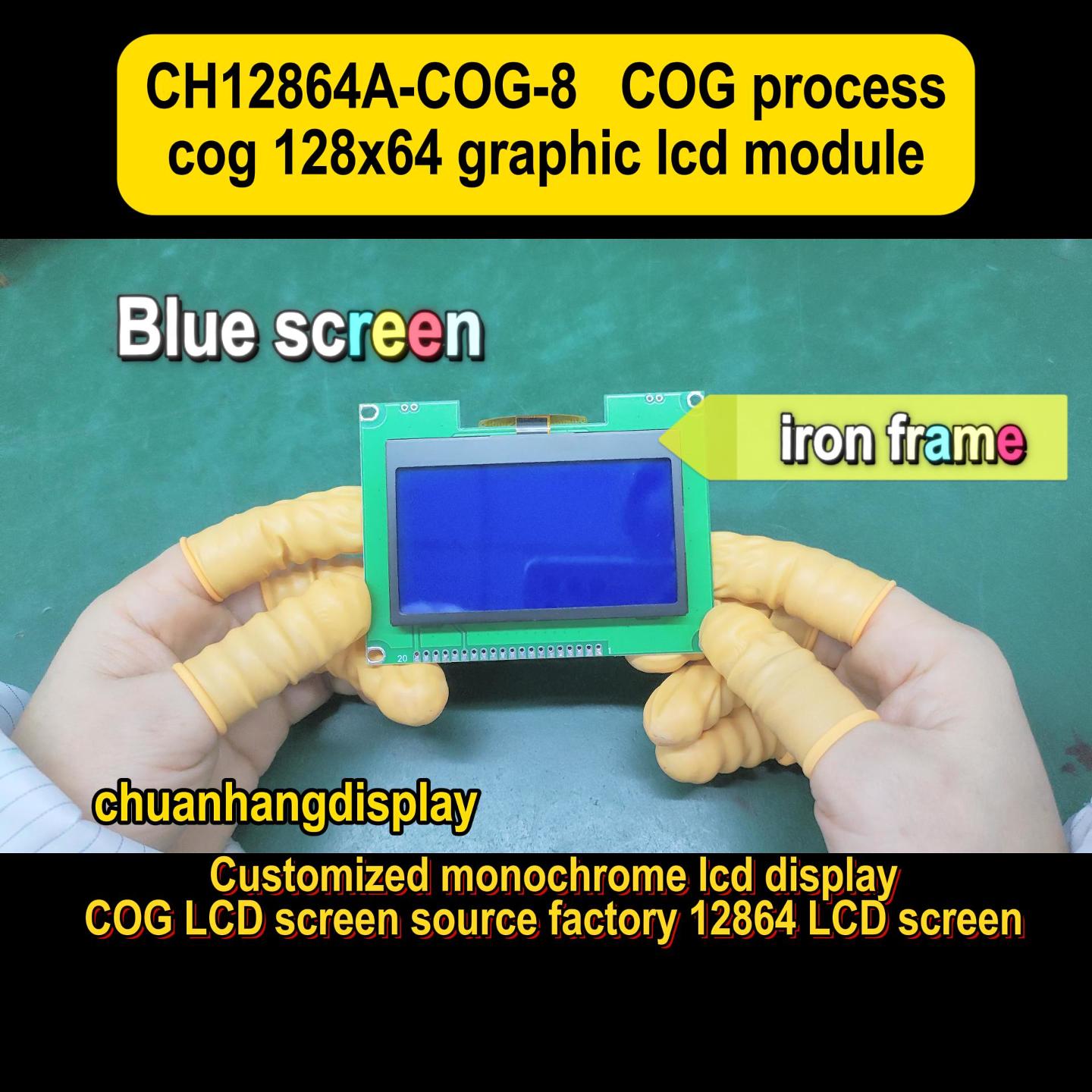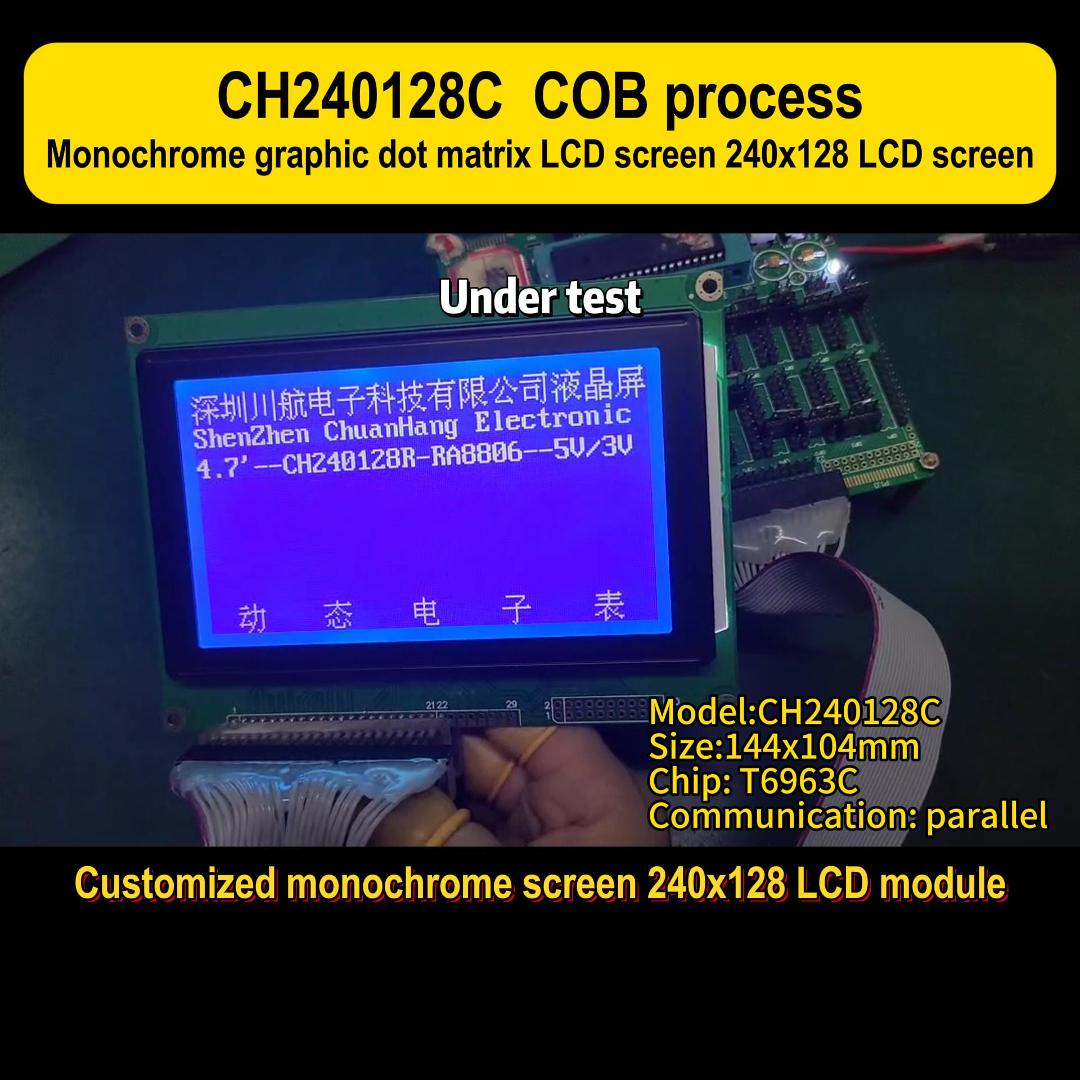In the world of electronic displays, the 12864 LCD stands out as a versatile and widely used component, particularly in embedded systems, industrial controls, and DIY electronics. Whether you're an engineer designing a new product or a hobbyist building a custom project, understanding the ins and outs of this display can make a significant difference. In this article, we'll dive into the essentials of the 12864 LCD, covering its specifications, applications, selection criteria, and customization options. As a leading provider in the display industry, Chuanhang Display offers insights and solutions to help you navigate this technology efficiently. By the end, you'll have a clear roadmap for integrating 12864 LCDs into your work, including cost considerations and supplier tips.

A 12864 LCD refers to a liquid crystal display with a resolution of 128 pixels horizontally by 64 pixels vertically. This monochrome display is known for its simplicity, reliability, and low power consumption, making it a go-to choice for applications requiring basic graphical or text interfaces. Unlike higher-resolution screens, the 12864 LCD strikes a balance between functionality and affordability, which explains its widespread adoption in sectors like automotive, medical devices, and consumer electronics. At Chuanhang Display, we've seen a growing demand for these modules due to their ease of integration and robust performance in various environments. For instance, they often come with built-in controllers, such as the KS0108 or ST7920, which simplify programming and reduce development time.
When evaluating a 12864 LCD, it's crucial to understand its core specifications to ensure it meets your project requirements. Typically, these displays feature a viewing area of around 70mm x 40mm, with a pixel pitch of about 0.5mm. They support a wide operating voltage range, often from 3.3V to 5V, and consume minimal power—ideal for battery-powered devices. The contrast ratio is adjustable, allowing for clear visibility under different lighting conditions. Many 12864 LCD modules include a backlight, such as LED or EL, which enhances readability in low-light settings. At Chuanhang Display, we emphasize the importance of checking interface options; common ones include parallel, SPI, and I2C, which affect compatibility with microcontrollers like Arduino or Raspberry Pi. Additionally, temperature tolerance ranges from -20°C to 70°C, making these displays suitable for harsh industrial environments. By focusing on these details, you can avoid common pitfalls and select a 12864 LCD that aligns with your technical needs.
The versatility of the 12864 LCD makes it a staple across multiple fields. In industrial automation, it's used for human-machine interfaces (HMIs) in control panels, displaying real-time data like temperature readings or machine status. The medical industry relies on these displays for portable diagnostic devices, where clarity and reliability are paramount. Consumer electronics, such as home appliances and gaming gadgets, often incorporate 12864 LCDs for user feedback screens. Even in educational and hobbyist projects, these modules are popular for building weather stations, digital clocks, or robotics interfaces. Chuanhang Display has worked with clients to customize 12864 LCDs for niche applications, such as agricultural monitoring systems, where durability and low power are critical. This broad applicability underscores why understanding the 12864 LCD is essential for innovators looking to create efficient and cost-effective solutions.
Selecting the ideal 12864 LCD involves considering factors like interface compatibility, environmental conditions, and budget. Start by assessing the communication protocol—if you're using a microcontroller with limited pins, an SPI-based 12864 LCD might be preferable over a parallel one. Next, evaluate the backlight type; LED backlights are energy-efficient and long-lasting, while EL options offer uniform illumination but may require higher voltage. For outdoor or high-temperature applications, opt for displays with extended temperature ranges and anti-glare coatings. Cost is another key aspect; basic 12864 LCD modules can be affordable, but added features like touchscreens or custom logos from suppliers like Chuanhang Display might increase the price. We recommend prototyping with sample units to test performance in real-world scenarios. Remember, a well-chosen 12864 LCD can enhance user experience and reduce long-term maintenance costs, so take the time to compare options based on your specific use case.

One of the standout advantages of the 12864 LCD is its flexibility for customization, which can elevate your product from standard to standout. At Chuanhang Display, we offer a range of custom services, including tailored screen sizes, specialized backlight colors (e.g., blue or green), and integrated touch capabilities. You can also request custom firmware or controller adjustments to streamline integration with your hardware. For branding purposes, adding logos or specific graphics during the manufacturing process is common. Another popular customization is the inclusion of protective coatings for water and dust resistance, which is vital for industrial or outdoor use. When considering a custom 12864 LCD, discuss your requirements early in the design phase to optimize lead times and costs. Many clients find that investing in customization improves product differentiation and customer satisfaction, making it a worthwhile consideration for long-term projects.
The price of a 12864 LCD can vary significantly based on factors like volume, features, and supplier relationships. Basic off-the-shelf modules might cost as little as $5 to $10 per unit in small quantities, but bulk orders from a manufacturer like Chuanhang Display can reduce this to $2 to $5 per unit. Customizations, such as enhanced backlights or special interfaces, typically add 10-30% to the base cost. It's also important to account for additional expenses like shipping, import duties, and potential tooling fees for custom designs. To manage budgets effectively, request quotes from multiple suppliers and consider total cost of ownership, including power efficiency and durability. Chuanhang Display often provides cost-effective solutions for high-volume projects, ensuring that you get reliable 12864 LCDs without compromising on quality. By understanding these pricing dynamics, you can make informed decisions that balance performance and affordability.
As an established player in the LCD market, Chuanhang Display brings expertise and reliability to the table when it comes to 12864 LCDs. We offer a comprehensive portfolio, from standard modules to fully customized solutions, backed by rigorous quality control and technical support. Our global supply chain ensures timely delivery, even for large orders, and we work closely with clients to optimize designs for cost and performance. Whether you're sourcing 12864 LCDs for a startup or a multinational corporation, our team provides personalized service to meet your unique needs. By choosing Chuanhang Display, you benefit from years of industry experience and a commitment to innovation, helping you stay ahead in a competitive landscape.
In summary, the 12864 LCD is a powerful tool for a wide range of applications, and mastering its selection, customization, and sourcing can drive your projects to success. With partners like Chuanhang Display, you have access to the resources needed to leverage this technology effectively. As you explore further, remember to prioritize your specific requirements and engage with suppliers early to ensure a smooth implementation.
Q1: What does "12864" refer to in an LCD display?
A1: The term "12864" denotes the display's resolution, meaning it has 128 pixels in width and 64 pixels in height. This standard resolution is common in monochrome LCDs for displaying text, graphics, or simple icons, and it's widely used in devices where space and power efficiency are key.
Q2: Can I customize a 12864 LCD for specific environmental conditions?
A2: Yes, customization is possible through suppliers like Chuanhang Display. You can request features such as extended temperature ranges (e.g., -30°C to 80°C), anti-glare coatings, or waterproof seals to suit harsh environments. This makes the 12864 LCD adaptable for industrial, automotive, or outdoor applications.
Q3: What are the typical interfaces available for 12864 LCDs?
A3: Common interfaces include parallel, SPI (Serial Peripheral Interface), and I2C (Inter-Integrated Circuit). The choice depends on your microcontroller's capabilities; for instance, SPI is popular for its simplicity and lower pin count, while parallel interfaces offer faster data transfer but require more connections.
Q4: How does the cost of a custom 12864 LCD compare to a standard one?
A4: Custom 12864 LCDs generally cost 10-50% more than standard modules, depending on the extent of modifications. Factors like custom backlights, touchscreens, or branding elements add to the price, but bulk orders from Chuanhang Display can help mitigate these costs through volume discounts.
Q5: Why should I consider Chuanhang Display as a supplier for 12864 LCDs?
A5: Chuanhang Display offers reliable, high-quality 12864 LCDs with strong technical support and customization options. Our global logistics and competitive pricing make us a trusted partner for both small and large-scale projects, ensuring you receive durable displays that meet your exact specifications.